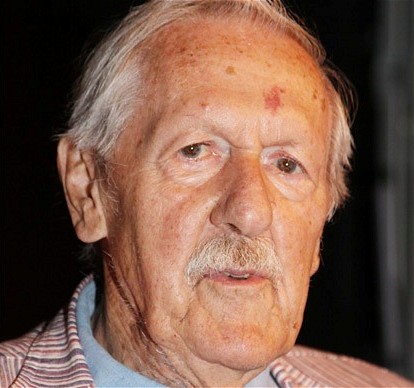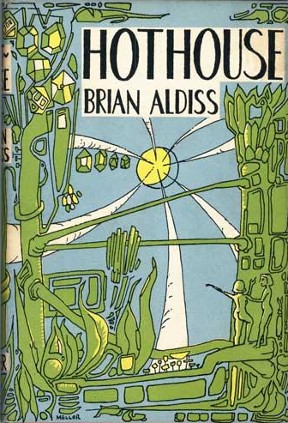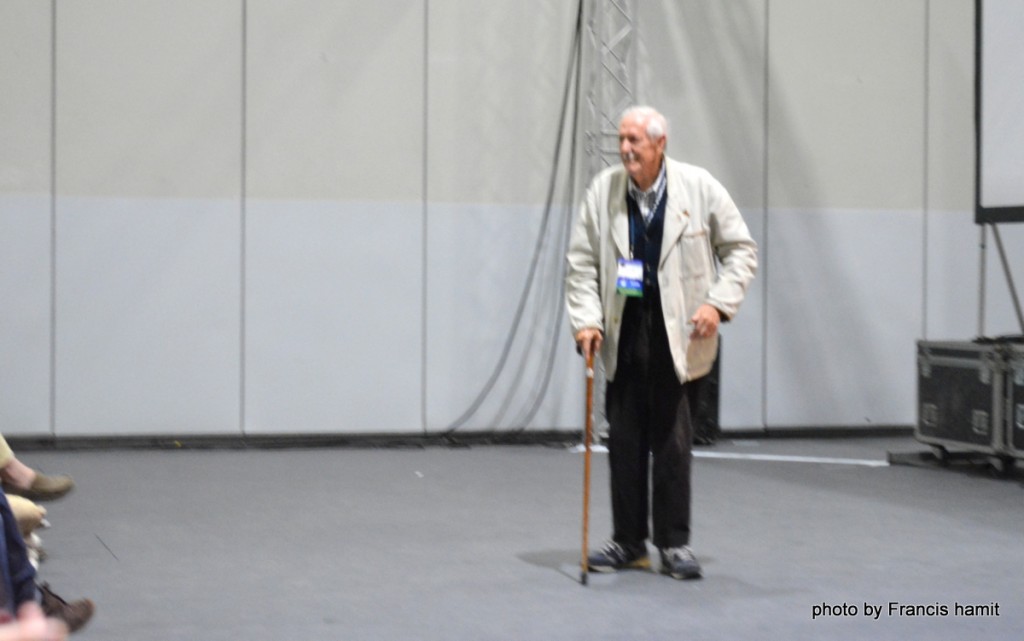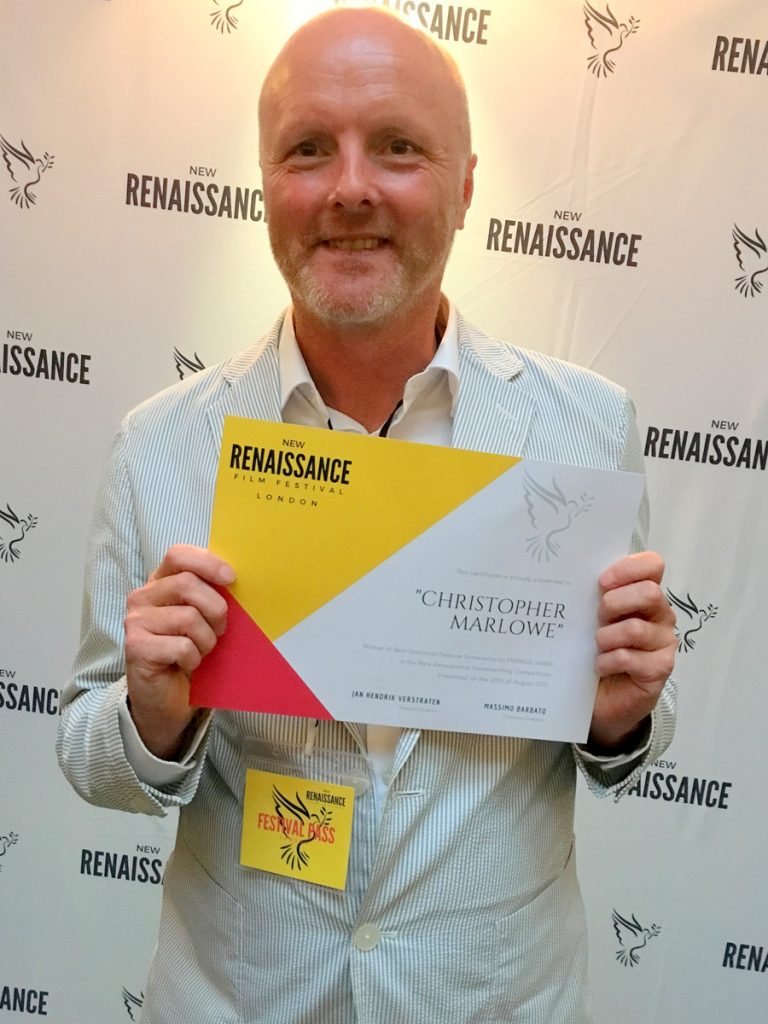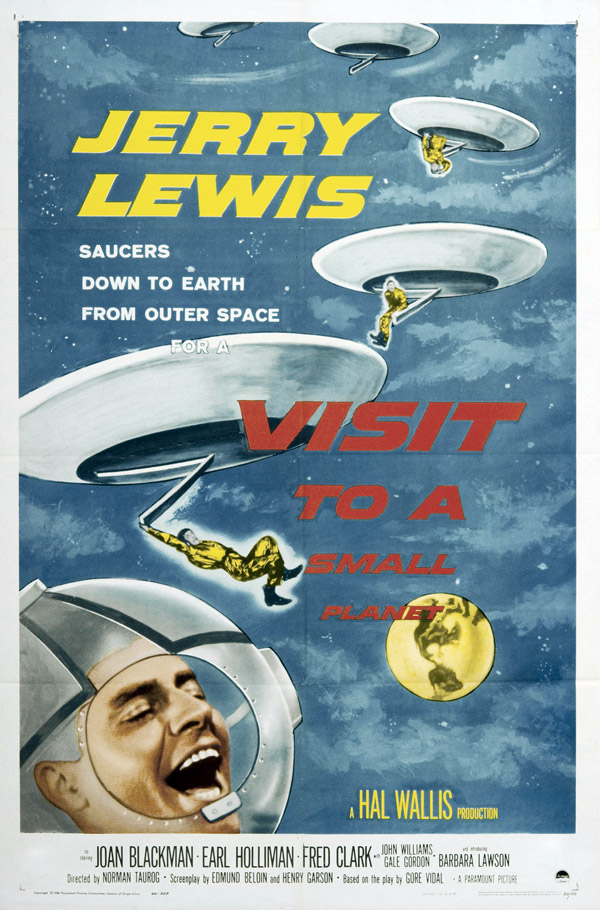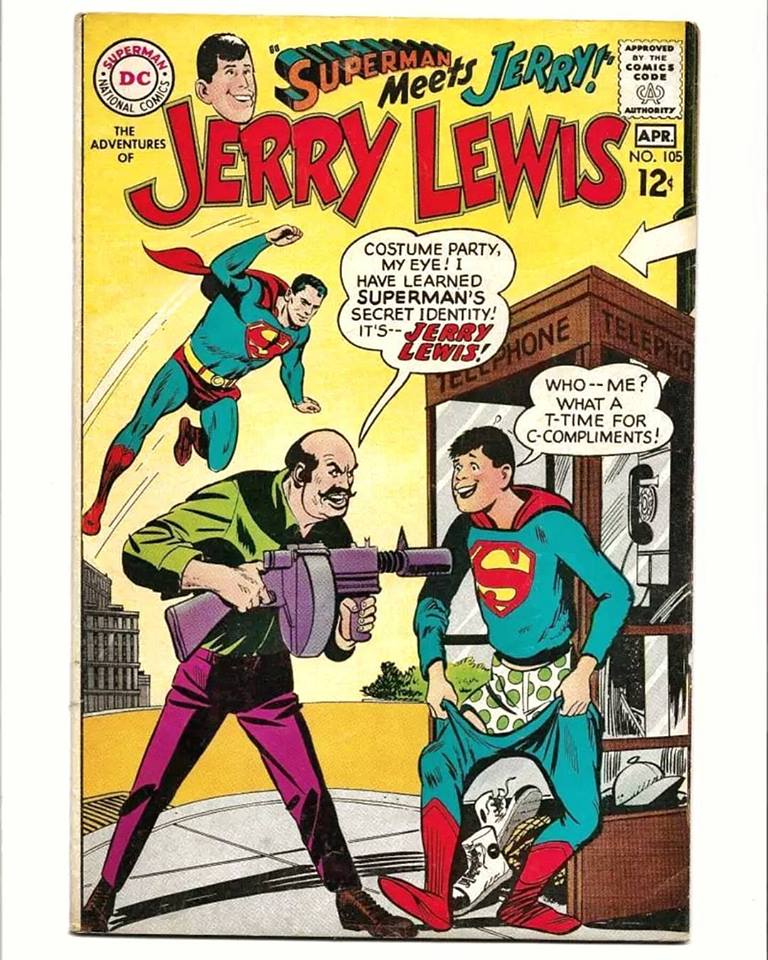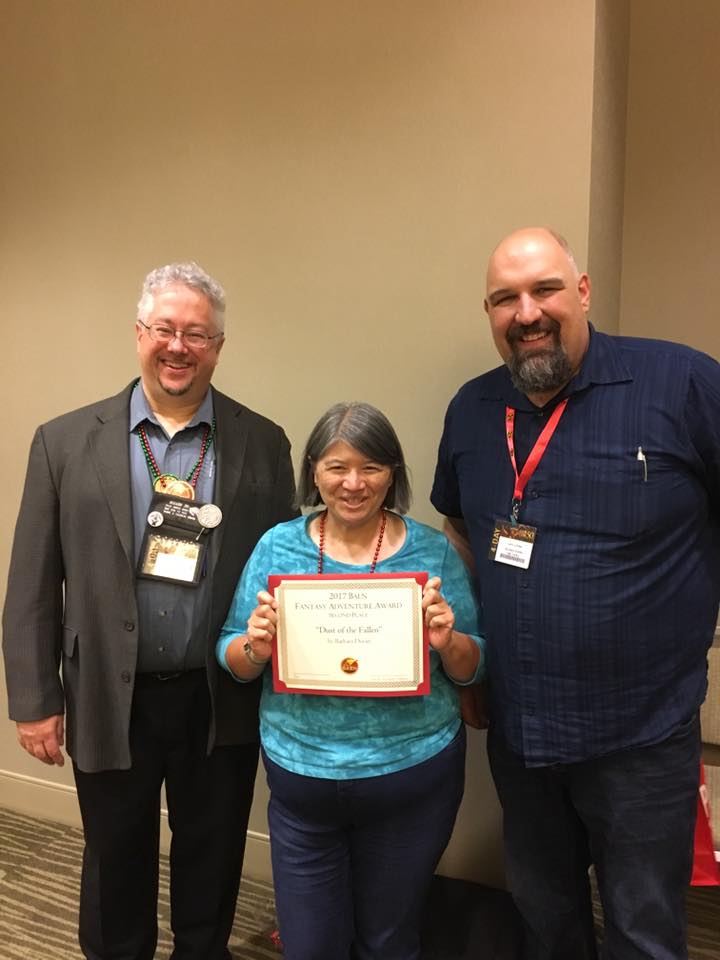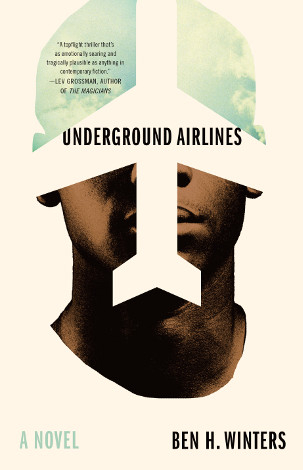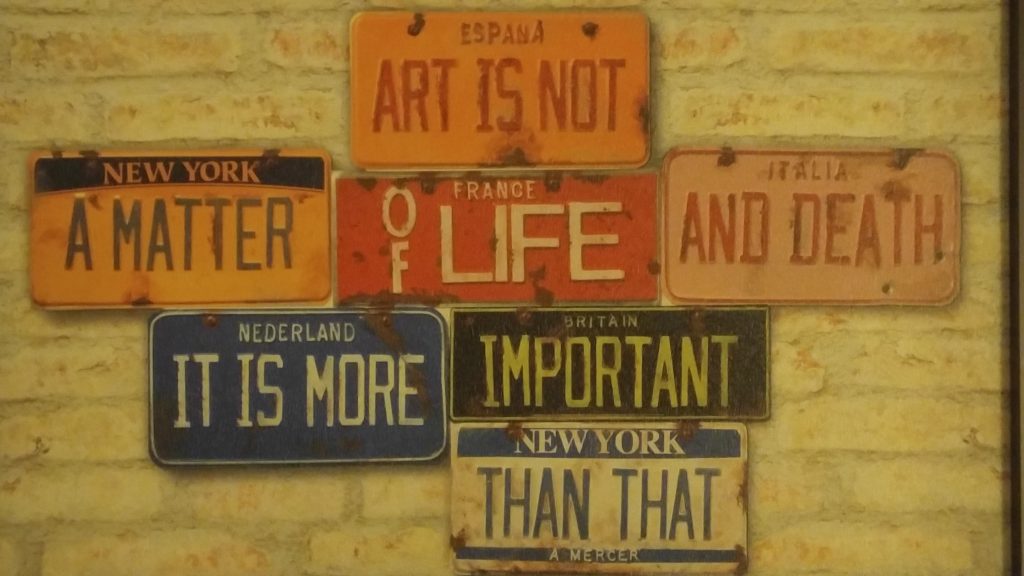
“The truth will set you free. But first, it will piss you off.”
~ Gloria Steinem ~
By Chris M. Barkley
On July 19, Variety, once the primary news sources of the entertainment industry, reported that the Home Box Office network issued a routine press release announcing a new project, an alternate history series called Confederate, created by D.B. Weiss and David Benioff, the show runners of their top-rated show, Game of Thrones.
“Confederate chronicles the events leading to the Third American Civil War. The series takes place in an alternate timeline, where the southern states have successfully seceded from the Union, giving rise to a nation in which slavery remains legal and has evolved into a modern institution. The story follows a broad swath of characters on both sides of the Mason-Dixon Demilitarized Zone – freedom fighters, slave hunters, politicians, abolitionists, journalists, the executives of a slave-holding conglomerate and the families of people in their thrall,” said the Variety story, written by Elizabeth Wagmeinster.
“Benioff and Weiss created Confederate and will serve as show runners, executive producers and writers, along with Nichelle Tramble Spellman (Justified, The Good Wife) and Malcolm Spellman (Empire), who will co-write the series and executive produce. Game of Thrones producers Carolyn Strauss and Bernadette Caulfield will also serve as executive producers,“ it stated. (It should be noted at this point that Nichelle and Malcolm Spellman are African Americans.)
Now, if you are a tried and true sf fan and reader, you are well familiar with the concept of “alternate history” which we will delve into in a moment. But first, let gauge the initial reactions to the announcement, which were swift, and furious.
The first rumblings of trouble came the very next day in a New York Times article by their television critic, David Itzkoff titled, “Confederate Poses Test Over Race for Game of Thrones Creators and HBO.” “To the show’s critics, its promise to depict slavery as it might be practiced in modern times is perhaps the most worrisome element of Confederate. They say that slavery, a grave and longstanding scar on the national psyche, especially for black Americans, should not be trivialized for the sake of a fantasy tv series,” wrote Itzkoff.
The story quotes Dodai Stewart, the editor in chief of Fusion, a social justice culture website, saying, “Racial history in this country is a very open, sensitive wound.” Also, “Nothing’s settled, nothing is healed. I want to believe that this will be handled sensitively. But it’s an emotional subject, and for too many people, it’s uncomfortably close to the reality they already experience.”
David Harewood, a black actor who has a starring role on the WB superhero program Supergirl tweeted, “Good Luck finding black actors for this project.”
The producers and HBO, realizing that they were facing a major blowback on social media, granted an interview on Vulture the very next day in which they defended the project and stated their intentions. “We plan to approach Confederate in a much different spirit, by necessity, than we would approach a show named Game of Thrones” said co-creator D.B. Weiss. His partner David Benioff added, “You know, we might fuck it up. But we haven’t yet.” That last quote did not help matters very much.
On that same day, ReBecca Theodore tweeted:
On July 25, bestselling feminist author Roxanne Gay penned an NYT editorial titled, “I don’t want to watch Slavery Fan Fiction”.
Activist April Reign, creator of the hashtag #OscarsSoWhite in protesting the whitewashing of the Academy Award nominations of the past several years, came out with a new hashtag on Sunday, July 31: #NoConfederate, calling for HBO to cancel the series altogether. In an interview with Vox Reign stated, “One red flag was the premise of the show itself. This is supposed to be alternate history, yet we see in the news almost every day the way that the Confederate mindset is still very alive and well in present-day 2017. You’ve got somebody like Dylann Roof, who is a Confederate flag waver, a white nationalist, very calmly going into a church in Charleston, South Carolina, and killing nine black people. You’ve got textbooks in the state of Texas literally rewriting history so that black people and Africans and African Americans were not ‘enslaved,’ they were merely workers.”
This past Friday, author and Hugo award nominee Ta-Nehisi Coates weighed in with essay on The Atlantic’s website, “The Lost Cause Rides Again”.
And THEN, just when you thought things weren’t turbulent enough, Amazon threw another shoe into the cauldron: African-American producers Will Packer (Girls Trip and Straight Outta Compton) and Aaron McGruder (The Boondocks and Black Jesus) announced on August 1 that they were teaming up to create Black America, in which former slaves are granted the states of Louisiana, Mississippi and Alabama in the post-Reconstruction South as reparations for slavery. In other words, the “anti-Confederate.” And both producers readily admit that the announcement of their project, which had been in development for over a year, was spurred by the controversy surrounding Confederate.
Now, I have to admit that all of this sturm und drang regarding these two projects did not surprise me at all. In a world where a lie can circle the earth several times while the truth is still struggling to get into its pants, this sort of reaction is very typical of any breaking news flash, political misstep or celebrity meltdown. (And fan feuds; now, more than ever.)
It has always been personally dismaying to me that when a project something like Confederate is announced, people who are so damned concerned about the feelings of a constituency, whether it be whites, minorities and sexes, gather together to condemn, decry and call for either boycotts or cancel said projects.
I am particularly perturbed that two writers that I admire, Roxanne Gay and Ta-Nehisi Coates, would jump on the censorship bandwagon. And let’s not kid ourselves, when you call for creators to abandon a project for being perceived as racist in nature, before a frame of film has been shot, it’s censorship.
What also upsets me is that when social critics attack science fiction or, in this case, the alternate history branch of sf, they often don’t know nor care about its history or purpose.
According to my good friend and Hugo-nominated sf author and editor Steven H Silver, an alternate history story requires three things: a point of divergence from the history of our world prior to the time at which the author is writing, a change that would alter history as it is known, and an examination of the ramifications of that change.
While there are many sources on what may have been the first literary instances of alternate history, the first one I vividly remember reading was Charles Dickens’ A Christmas Carol, wherein the Ghost of Christmas Future show Ebenezer Scrooge the consequences of his actions if he continued his curmudgeonly ways.
Many historians of modern sf recognize Nat Schachner‘s 1933 story “Ancestral Voices” and Murray Leinster’s “Sidewise In Time”, published a year later, as the most influential templates from which most alternate history stories we read today can trace their origins. Some of the more famous literary examples include Ward Moore’s Bring the Jubilee (1953), Philip K. Dick’s The Man in the High Castle (1962), Harry Turtledove’s The Guns of the South (1992) and The Yiddish Policeman’s Union by Michael Chabon (2007) . Media contributions include many episodes of Star Trek, The Back to the Future series, the Terminator films, Groundhog Day, the Amazon series version of The Man in the High Castle, and Timeless.
So as an ardent fan of some of these works, the idea of the Nazis or Russians taking over America, World War Three starting right after the end of WWII or the enslavement of the human race by aliens or other humans doesn’t faze me in the least. In fact, the most disturbing thing I have seen recently is Netflix’s adaptation of Margaret Atwood’s The Handmaid’s Tale.
Which brings me to my first point, when well made, alternate history tales are meant to inform, illuminate and SCARE an audience into a different frame of mind. Or, as Robert Heinlein famously posited in the 1940’s, “if this goes on…”
Secondly, specifically to Roxanne Gay’s point, she does not want to watch “slavery fan fiction”. Well, as it turns out, neither do I. Yet one of her reasons for tuning out is that, and I quote, “My exhaustion with the idea of Confederate is multiplied by the realization that this show (referring to Game of Thrones) is the brainchild of two white men who oversee a show that has few people of color to speak of and where sexual violence is often gratuitous and treated as no big deal. I shudder to imagine the enslaved black body in their creative hands.”
Well to begin with, D.B. Weiss and David Benioff may have created the television version of Game of Thrones, but the outline of the story they are dramatizing is the sole property of one George R.R. Martin.
And Martin’s story is about power, greed, avarice, pain, faith, loyalty, perseverance and the longing for true freedom, all cloaked in a fantasy world where sometimes, doing the right thing, having a conscience or just being kind is an excellent way to a quick and sudden demise. Women have endured rape, betrayal, poisoning, torture and other various forms of violence. But men have not gotten off the hook so easily in the show as you imply; they have been decapitated, totally emasculated, has their throats slit and died other equally horrible fates. All of the characters, male and female, are serving the main substance of the story; surviving, forging on and trying to retain some small thread of humanity amid the carnage and terrible circumstances.
And when Weiss and Benioff approached Martin with the idea of turning his books into a maxi-series, he, a seasoned television producer himself, was highly skeptical it could be done with any semblance of quality or coherence. What persuaded him to relent was their impressive demonstration of their knowledge of the material and a battle plan to interpret the story for the small screen.
And what are their qualifications? I mean despite winning the Emmy Award for Best Drama Series (from their industry peers mind you) for the past two years?
David Brett Weiss has a Master of Philosophy in Irish literature from Trinity College, Dublin and attended Iowa Writers’ Workshop, where he earned a Master of Fine Arts in creative writing. He has written one novel, Lucky Wander Boy (2003), was an executive producer of The Specials (an Oprah Winfrey Network show about five friends with intellectual disabilities who share a house) and has co-written 45 episodes of Game of Thrones with his writing partner, David Benioff.
Mr. Benioff is an alumnus The Collegiate School, Dartmouth College and also attended Trinity College in Dublin for a year, where he met his writing partner, D.B. Weiss. He has a Masters in Fine Arts from the University of California, in Irvine. He has written two novels, The 25th Hour in 2001 (which was adapted for the screen starring Edward Norton and directed by, wait for it, Spike Lee!) and City of Thieves in 2008. He drafted an early version of Troy (2004) and wrote screenplays for the films Stay (2005) and The Kite Runner (2007).
You, Ms. Gay, object to these “two white men” tackling an alternate history project you don’t approve of? Well, I have a term for that, barefaced racism. One’s race, Ms. Gay should NOT disqualify a person to write, direct or produce anything. And from the credits of these two men cited above, I would hardly call either man close to being anything like Simon Legree. I feel some empathy for your distress you expressed in your editorial, Ms. Gay, but not at the expense of artistic freedom. Yes, I miss President Obama, too and the current occupant of the White House is an abomination to any rational person’s standards. Wringing our hands about him is not the way to react. In my opinion, projects like Confederate; if it’s done correctly, illuminates what makes human beings act in such a abhorrent manner. You may choose to cover your eyes, Ms. Gay, I intend to stay “woke” and attentive.
Secondly, Ta-Nesihi Coats and April Reign’s comments attack Confederate on the corporate level, taking direct aim at the motives of HBO. In his Atlantic editorial Coates writes, “A swirl of virtual protests and op-eds have greeted this proposed premise. In response, HBO has expressed ‘great respect’ for its critics but also said it hopes that they will ‘reserve judgment until there is something to see.’
“This request sounds sensible at first pass. Should one not ‘reserve judgment’ of a thing until after it has been seen? But HBO does not actually want the public to reserve judgment so much as it wants the public to make a positive judgment. A major entertainment company does not announce a big new show in hopes of garnering dispassionate nods of acknowledgement. HBO executives themselves judged Confederate before they’d seen it—they had to, as no television script actually exists. HBO hoped to communicate that approval to its audience through the announcement.
“HBO’s motives aside, the plea to wait supposes that a problem of conception can be fixed in execution. We do not need to wait to observe that this supposition is, at best, dicey.”
Well, it’s pretty clear to me what, HBO’s motives are; money, audience and acclaim, in that order. They provide the programming, money is provided by paid subscribers, the audience watches (ad free, I might add) and the acclaim, through ratings, awards and attracting bigger audiences, is the goal. Mr. Coates says we should be skeptical and on that point we are in total agreement; more often than not Hollywood rarely gets films or tv shows about race relations right. I don’t mind the criticism or the protests. What I mind is the insistence or even the implication that NO ONE (except maybe, people of color) should attempt to do these subjects, ever.
What both Mr. Coates and Ms. Reign seem to be asserting is that black people live in oppression and fear every single day, so why should we, as people of color, tolerate it being dramatized as entertainment?
Because, I reply, we, the American people, have a tradition of freedom of expression. Goodness knows, it has not been a perfectly implemented or even a fair tradition at certain points in our history. But it’s THERE, in the First Amendment to the Constitution. Yes, it only insures that the government is mostly inhibited in the free expression of speech and the arts. But we, without exception, are free to speak about almost anything we like without fear of retribution from the government. But the double edged sword is that we are not free from the consequences of our speech.
Just as Chic-Fil-A COO Dan T. Cathy, Mark Fuhrman, Paula Dean, former sheriff Joe Arpaio and pharma-bro Martin Shkreli and other miscreants ultimately discovered, you can express an unpopular, dumb, stupid or racist sentiments but the payment for that freedom will insure the bright glare of social media scrutiny, ridicule, protests, loss of privacy and yes, boycotts of their products and services.
HBO is not in the business of backing a losing proposition or inviting scorn. When they made a production deal for Confederate, they had the two writer-producers of the most popular television show in the world pitching it to them. Weiss and Benioff were given the benefit of the doubt by HBO, not the critics, protesters and naysayers. Nor, I suspect, do they want it. They, the other writers and co-producers bear the weight of the responsibility of producing a show that should provoke and confront the deepest and most powerful emotions from us.
What I sense from both you Mr. Coates and you, Ms. Reign, is that you appear angry and afraid; angry that Hollywood is going to screw it up again, afraid that the show is going to be a rallying cry for racists, right wing neo-conservatives and crazy people and angry that the creators of Confederate do not have the interests of minorities at heart.
And I say this: I am afraid of all of those things, too. But you know what I am more afraid of? That if artists and entertainers give into these sorts of protestations, we stifle free speech and artistic freedom to the point where people will go out of their way NOT to take a chance to be innovative, daring or take risks.
I am adamant in saying that we can’t give in to or give any credibility to this sort of fear and loathing. We must confront, overcome and transcend the fears within us. And sometimes, that means going head to head against it, not merely wanting to wish it away.
Those risks, of alienating the public, taking unpopular stances or being outright controversial or just plain wrong come with the territory of creating any art. But those are risks worth taking. That is why we revere the works people who were the risk takers of their times; Mozart, Janis Joplin, James Baldwin, Alice Cooper, Robert Mapplethorpe, Judy Chicago and Misty Copeland. Without the risk of failure, there is no reward and certainly no art worth noting for prosperity.
Frankly, we are damned lucky to have these four veteran writer-producers in charge of this particular high wire act.
And finally, Confederate, and Black America for that matter, are still untold stories right at this moment. Other than the provocative premises of each project, we know less about them than what Jon Snow knew during the first season of Game of Thrones.
Since the beginning of humankind, we have always expressed the compulsive desire for parables, tales and stories, either cut from real life or made from the fears and longings of our minds. These stories come in many forms, crime, romance, biography and yes, even fantasy and science fiction.
Speaking for myself, I don’t care for poorly told stories, only well told ones. My only charge to the writers, directors and producers of these projects is this: Make me CARE. Make it MATTER. And most importantly, make me beg to ask, WHAT COMES NEXT?






